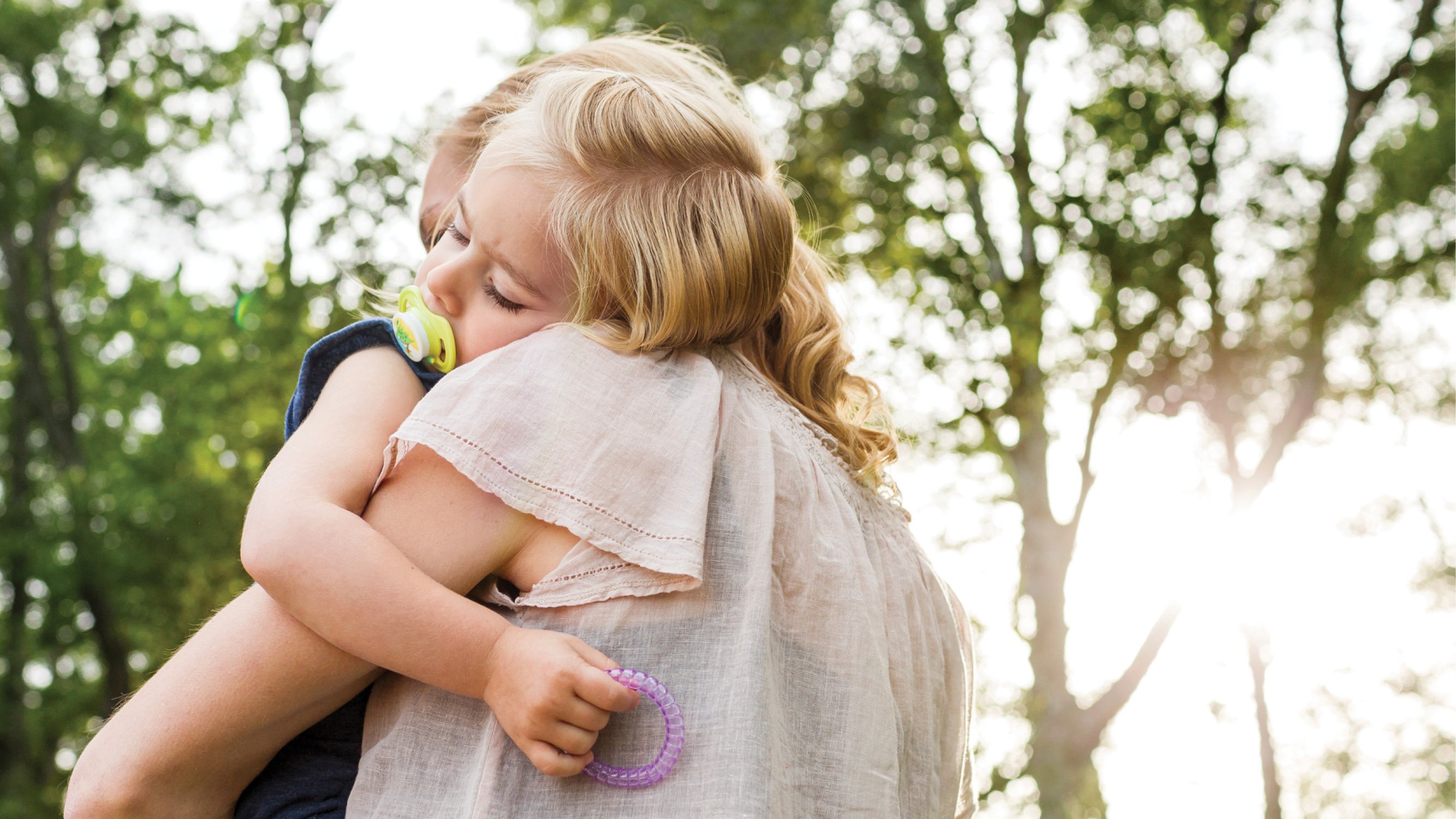Babies sucking on soothers are pretty cute. But if your kid is three or four years old and still using a pacifier, it’s time to break the binky habit.
“Mama, can you email the Soothie Fairy?” Maisie, my three-and-a-half-year-old, asked during her bedtime story one evening. Was this a sign she was ready to finally stop using the pacifier? We hugged and I praised her for being a brave girl. But my elation quickly morphed into a sinking feeling. She was a soother-reliant sleeper, so I was picturing tear-filled bedtimes and it’s-too-early-to-even-check-the-clock wake-ups. But I knew it was time—all attempts to wean off the pacifier as a toddler had failed, and now we had an almost-JKer who still wouldn’t go to bed without her “soo-soos.”
Pacifiers are designed to satisfy a baby’s natural sucking reflex and provide comfort. But they’re not really meant for toddlers with a full set of teeth. For kids who are forcefully sucking on a soother (even just at nighttime) or keeping it in their mouths for extended periods of time, changes can occur to the structure of the roof of their mouth and the alignment of teeth.
“After age four, as permanent teeth start to come in, there’s an increased risk of alteration of the bone structure in the front of the mouth, which is difficult and costly to correct,” says Aaron Burry, an Ottawa dentist who works in public health.
At our last checkup, I proudly told our dentist that Maisie had cut back to just bedtime soother sucking. She wasn’t impressed. “Every night Maisie is basically doing DIY orthodontics—but pushing the teeth out of alignment,” she told me.
Some toddlers will give up their paci on their own, without a big fuss. And much like potty training, you’ll have the best chances of success if you wait until your child is showing signs of readiness, like using the paci less often anyhow.
But if they’re pushing three and still sucking on a soother during the day, it’s probably become their primary way of managing stress, says Linda Martin, a registered ECE and director of two Toronto child care centres. This can make the breakup a bit trickier. By age two most kids are able to develop alternative strategies for self-soothing or calming down after a tantrum.
Martin recommends transitioning your child to a different comfort item instead of the pacifier. She’s seen success with silicone jewellery (sometimes called “chewellery”), which gives kids something to hold and even put in their mouth when they want to. Other kids easily switch to a stuffie or blanket they can hug. Having an item to turn to gives little ones a bit of control, which Martin feels is at the core of a toddler or preschooler’s prolonged preoccupation with a paci. “They have so few things they can control in their day-to-day life, at home and at daycare. This is a way to be respectful and give them an option.”
It’s wise to wean a child off their pacifier before big changes, like starting daycare, the arrival of a new baby or a household move. “These life events may increase your child’s need for the soothing they receive from the pacifier,” Burry says, so try to phase it out beforehand.
Burry warns parents that they might need to take multiple soother-weaning approaches. Some resort to soother sabotage, cutting off the end little by little until it’s not fun to suck on anymore. Others simply throw the pacifiers away. But the experts seem to agree that a positive approach tends to work best.
“You can do it gradually, by leaving the binky in the daycare cubby, then in the car in the morning, then eventually not removing it from their bed [in the morning],” says Martin. Some kids really go for the idea of pretending to donate them to a new baby you know. Others like planning a pacifier party, with cake and presents.
Because Maisie has an older sister who’s already been visited by the Tooth Fairy, she was taken with the Soother Fairy idea. We told her the fairy would bring her a gift in exchange for her soothers, and she was on board. We sent the fairy a link to her wish list and she started counting down the sleeps to the special night. (I happen to know that the Soother Fairy splurged on expedited shipping.)
In the end, Maisie was quite brave about tucking her two soothers in a cloth bag and ceremoniously hanging it on her bedpost. The next morning, she was ecstatic to find the new doll she’d requested, wrapped and delivered right to her room.
In the weeks since, she’s woken up a few times in the night asking for her soo-soo, and there have been a few (mostly manageable) tears. I won’t say that breaking up with binky didn’t suck, but like most seemingly enormous changes with little kids, it wasn’t such a big deal after all.
Editor’s note:
We hope you enjoyed reading this article from Today’s Parent. We’re working hard to provide our readers with daily digital articles that aim to inform, inspire and entertain you.
But content is not free. It’s built on the hard work and dedication of writers, editors and production staff. Can we ask for your support? We are currently offering 3 issues of the print edition of Today’s Parent for only $5. A subscription also makes a great gift for that new parent in your life.
Our magazine has endured for more than 35 years by investing in important parenting stories. If you can, please make a contribution to our continued future and subscribe here.
Thank you.
Kim Shiffman
Editor-in-Chief, Today’s Parent
